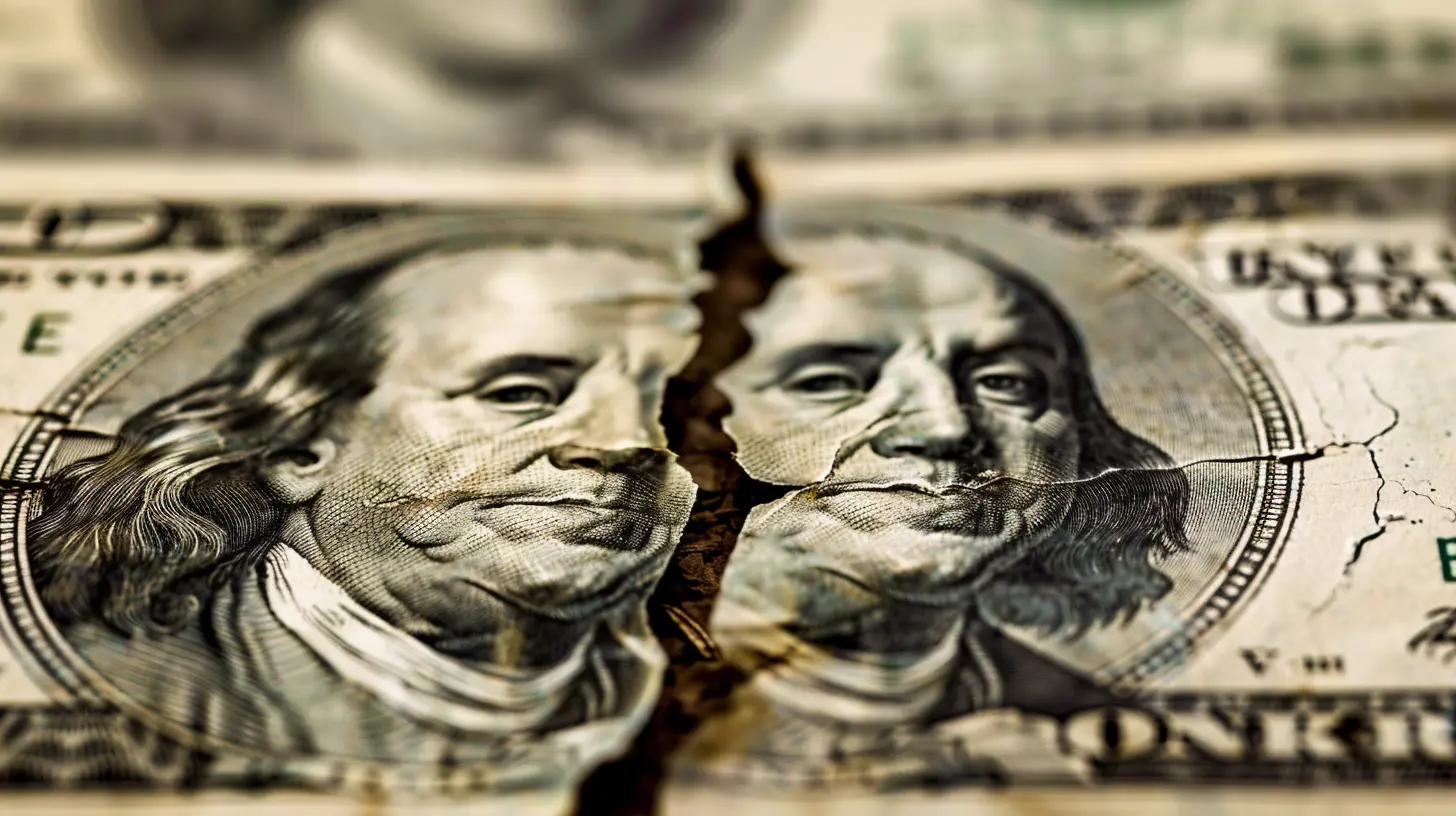The Relationship Between Capital Gains and Dividend Income
15 September 2025
When it comes to investing, we often hear two familiar buzzwords—capital gains and dividend income. Now, if you’ve ever dug into your investment statements or tax forms and scratched your head, wondering what these two terms actually mean and how they’re connected, you’re not alone!
In this blog, we’re going to break it all down. We’ll look at what capital gains and dividend income are, how they work, where they intersect, and what they mean for your wallet. Whether you're a beginner just dipping your toes into investing waters or someone with a decent portfolio, understanding the relationship between capital gains and dividend income is essential for growing your money smartly.

What Are Capital Gains?
Let’s start with the basics. Capital gains refer to the profit you make when you sell an asset—like stocks, real estate, or mutual funds—for more than you paid for it. Think of it as flipping a house: you buy low, sell high, and the difference in price is your gain.There are two types of capital gains you should be aware of:
- Short-term capital gains: These apply when you sell an asset that you held for one year or less. Usually, these are taxed at your regular income tax rate.
- Long-term capital gains: These kick in when you’ve held the asset for over a year before selling. The tax rate here is typically lower, which can be a nice bonus for patient investors.
Here’s an example. Suppose you bought 100 shares of XYZ Company at $50 each. That’s a $5,000 investment. A year and a half later, the shares are worth $80 and you sell them for $8,000. Congrats—you just made a $3,000 long-term capital gain!

What Is Dividend Income?
Now, dividend income is a little different. Instead of selling something for a profit, you get paid simply for owning something—specifically, dividend-paying stocks or funds.Companies that earn profits may choose to share those profits with their shareholders in the form of dividends. This is your so-called "passive income"—money you earn without lifting a finger once you’ve invested.
There are two common types of dividends:
- Qualified dividends: These meet specific IRS criteria and are taxed at the favorable long-term capital gains rate.
- Ordinary (or non-qualified) dividends: These are taxed as regular income, meaning at your marginal tax rate.
If a company pays a quarterly dividend of $1 per share and you own 200 shares, that’s $200 every quarter just rolling into your account. Not too shabby, right?

Capital Gains vs. Dividend Income: What’s the Difference?
Let’s get this straight—the main difference lies in how you earn the money.- Capital gains come from the sale of an asset.
- Dividend income is money distributed to you without selling anything.
One is like selling a painting you bought years ago for a profit, while the other is like your painting earning rental income just by hanging in a gallery.
Another major difference? Timing and control. With capital gains, you decide when to sell and trigger the gain. Dividends? The company decides when and how much to pay.

Where They Overlap: Key Similarities
Here’s where things get interesting. While capital gains and dividends are different in how they’re generated, they do play in the same sandbox. Both are:- Forms of investment income: They represent money that your money makes. Yay, compounding!
- Taxable: Uncle Sam wants his share—always.
- Impacted by investment strategy: Your decisions around growth vs. income investing can influence how much of each you rack up.
If you invest in equities (like stocks or ETFs), you’re likely to encounter both. For example, a stock might pay you dividends regularly, and when its price goes up over time, you might sell it for a capital gain.
How They Work Together in a Portfolio
Let’s think of your investment portfolio as a team. Dividend income is the steady player that brings regular contributions to the score, like a basketball player who shoots free throws with precision.Capital gains, on the other hand, are the flashy 3-point shooter—maybe quiet most of the game, but when they score, it’s a game-changer.
Together, they balance each other out. While dividends provide income, capital gains offer growth. A diversified portfolio often includes a mix of both: dividend-paying stocks for income and growth stocks for appreciation.
Tax Implications: The IRS Has a Say
We can't talk about investing without bringing taxes into the mix. Here's how capital gains and dividend income are taxed in the U.S.:Capital Gains Taxes
- Short-term: Taxed at your ordinary income tax rate (which can be high).- Long-term: Taxed at 0%, 15%, or 20% depending on your income level.
Dividend Taxes
- Qualified dividends: Taxed at the same rates as long-term capital gains.- Non-qualified dividends: Taxed at ordinary income tax rates.
Did you catch that overlap? Yup—qualified dividends are taxed the same way as long-term capital gains. That’s one of the major points of connection between the two.
So, if you’re smart with your investments and hold onto assets long enough, you could enjoy a lower tax bill on both fronts.
Dividend Reinvestment and Capital Gains
Here’s where things get kind of meta.Many investors choose to reinvest their dividends using a Dividend Reinvestment Plan (DRIP). Instead of taking the cash, you use the dividend to buy more shares of the stock or mutual fund. This grows your investment and, over time, increases your capital gains potential. Smart, right?
It’s like planting seeds instead of eating them—you grow a bigger tree, which later gives you even more fruit.
Which One Should You Focus On?
Trick question. The answer really depends on your goals, risk tolerance, and investment timeframe.If you need income now...
Dividend income is your friend. It's reliable, it shows up regularly, and you don’t need to sell your assets to get it. This is especially attractive to retirees or folks looking for recurring cash flow.If you're building wealth over time...
Capital gains might take the lead. Growth stocks don’t always pay dividends, but they may offer significant appreciation in value over the years.Much like choosing between a salary and a bonus, dividends are the salary—predictable and regular. Capital gains are the bonus—potentially larger, but not guaranteed.
When Capital Gains Turn into Dividend Income
Here’s a twist—some companies use capital gains to fund dividend payments, especially in mutual funds and REITs.Let’s say a mutual fund sells a stock for a profit. Instead of reinvesting that gain, it might distribute it to shareholders as a capital gain distribution. So in a roundabout way, capital gains can morph into dividend-like income.
This doesn’t change the fact that it’s still taxable, but it does highlight how interconnected these two income streams are.
Diversification: The Ultimate Strategy
Investing isn’t about putting all your eggs in one basket. You wouldn’t only rely on dividend-paying stocks or only chase capital gains. A balanced portfolio that includes the potential for both provides steady income and long-term growth.Think of it like balancing a diet. Dividends are your protein—consistent and essential. Capital gains are your carbs—short bursts of energy you need in moderation. Both are crucial for a healthy financial plan.
Real-World Example: John's Investment Journey
Let’s bring it to life with a story.John is a 35-year-old software engineer who’s been investing for a few years. He owns shares of a tech company that doesn’t pay dividends but has seen significant price growth—he could sell for a juicy capital gain.
At the same time, John holds shares in a utility company that pays steady quarterly dividends. He reinvests them using a DRIP, growing his share count over time.
The result? John’s portfolio grows in two ways: through capital appreciation and through reinvested dividends generating compound growth. By understanding how these two elements work together, he’s setting himself up for both short-term flexibility and long-term wealth.
Final Thoughts
Capital gains and dividend income aren’t rivals—they’re teammates. Understanding how they work individually and together can help you make smarter choices with your money.Whether you're looking for income, growth, or a blend of both, keeping an eye on these two aspects of investing will help you build a stronger, more resilient portfolio. And with smart tax planning, you can even keep more of what you earn.
So the next time someone brings up capital gains or dividend income, you’ll not only know the difference—you’ll know why both matter for your financial future.
all images in this post were generated using AI tools
Category:
Capital GainsAuthor:

Knight Barrett
Discussion
rate this article
1 comments
Cassidy Sawyer
Understanding the interplay between capital gains and dividend income is crucial for optimizing your investment strategy and maximizing overall portfolio returns effectively.
September 19, 2025 at 12:31 PM

Knight Barrett
Thank you for your insightful comment! Understanding this interplay is indeed vital for optimizing investment strategies and enhancing portfolio performance.


